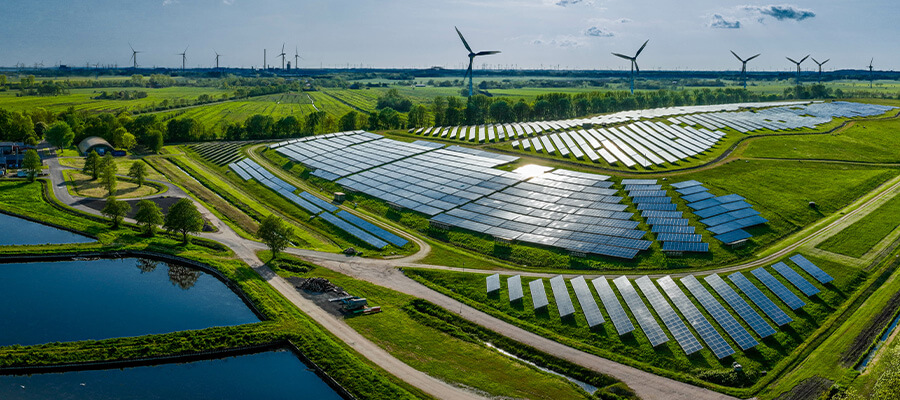Let’s reimagine energy and power transmission
Galvorn is a lightweight, strong, and conductive critical material to the energy transition
The US energy system is transitioning to renewable sources (wind, solar) while electrification is underway for transport, residential and commercial heating, and industrial processes. Together these drivers call for a major upgrade of the US electrical grid in terms of capacity and connectivity.
Lightweight cabling, big impact

Current grid conductors are based on aluminum (or sometimes copper) reinforced with steel and must be supported by massive steel towers with concrete foundations. Electrical conductivity alone is not the deciding factor in grid conductors; in fact, aluminum is normally preferred to copper because of its lower density. By using Galvorn in transmission cables, we estimate we can reduce the cable weight by at least 20%, increase the breaking strength by 120%, and increase the tensile modulus by 30%, while maintaining ampacity.

Less steel, less concrete means less cost
Using Galvorn in power transmission lines can dramatically improve performance (lighter and stronger) while reducing the total cost to install. You need fewer steel structures supported by concrete to hold these lines up! Steel and concrete are notoriously GHG-intensive. By using less, we can further reduce the emissions associated with the modern clean grid.
A carbon-negative solution for a climate-positive grid

Galvorn possesses ideal properties that align with transmission line design criteria. It also has the potential to further improve with technological advancements, while other core materials have reached their technological limits. Last but not least, aluminum alloys, steel, and carbon fibers all have high CO2and environmental footprints. Increased use of these materials for grid expansion and reconductoring will come with significant additional CO2 emissions and loss of land and habitat to bauxite mining (the world’s main source of aluminum).



